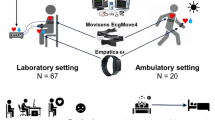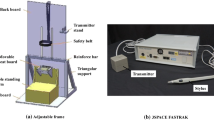Abstract
Background
The purpose of this study was to: 1) evaluate the quality of promotional pedometers widely distributed through cereal boxes at the time of the 2004 Canada on the Move campaign; and 2) establish a battery of testing protocols to provide direction for future consensus on industry standards for pedometer quality.
Methods
Fifteen Kellogg’s* Special K* Step Counters (K pedometers or K; manufactured for Kellogg Canada by Sasco, Inc.) and 9 Yamax pedometers (Yamax; Yamax Corporation, Tokyo, Japan) were tested with 9 participants accordingly: 1) 20 Step Test; 2) treadmill at 80m.min−1) (3 miles.hr−1) and motor vehicle controlled conditions; and 3) 24-hour freeliving conditions against an accelerometer criterion.
Results:
Fifty-three percent of the K pedometers passed the 20 Step Test compared to 100% of the Yamax. Mean absolute percent error for the K during treadmill walking was 24.2±33.9 vs. 3.9±6.6% for the Yamax. The K detected 5.7-fold more non-steps compared to the Yamax during the motor vehicle condition. In the free-living condition, mean absolute percent error relative to the ActiGraph was 44.9±34.5% for the K vs. 19.5±21.2% for the Yamax.
Conclusions:
K pedometers are unacceptably inaccurate. We suggest that research grade pedometers: 1) be manufactured to a sensitivity threshold of 0.35 Gs; 2) detect ±1 step error on the 20 Step Test (i.e., within 5%); 3) detect ±1% error most of the time during treadmill walking at 80m.min−1 (3 miles.hr−1); as well as, 4) detect steps/day within 10% of the ActiGraph at least 60% of the time, or be within 10% of the Yamax under free-living conditions.
Résumé
Contexte
Cette étude visait: 1) à évaluer la qualité des podomètres promotionnels distribués à grande échelle dans les boîtes de céréales lors de l’édition 2004 de la campagne Canada en mouvement; et 2) à établir une batterie de protocoles d’essai pour orienter le consensus futur autour des normes industrielles de qualité des podomètres.
Méthode
Quinze compteurs de pas Special K* de Kellogg («podomètres K» ou «K»; fabriqués pour Kellogg Canada par Sasco, Inc.) et neuf podomètres Yamax (Yamax; Yamax Corporation de Tokyo, au Japon) ont été testés sur neuf personnes. Nous leur avons fait subir: 1) un test de 20 pas; 2) un test en milieu conditionné sur tapis roulant à.. 80 m min−1 (3 milles h−1) et en automobile; et 3) un test de 24 heures en milieu naturel, par rapport aux résultats d’un accéléromètre.
Résultats
Cinquante-trois p. cent des podomètres K ont réussi le test des 20 pas, contre 100% des Yamax. Le pourcentage d’erreur absolu moyen du K durant la marche sur tapis roulant était de 24,2±33,9, contre 3,9±6,6% pour le Yamax. Le K a décelé 5,7 fois plus de non-pas que le Yamax lors du test en automobile. En milieu naturel, le pourcentage d’erreur absolu moyen par rapport à un accéléromètre ActiGraph était de 44,9±34,5% pour le K et de 19,5±21,2% pour le Yamax.
Conclusions
Les podomètres K sont trop imprécis pour être jugés acceptables. Nous suggérons d’employer pour la recherche des podomètres: 1) dont le seuil de sensibilité est de 0,35 G; 2) pouvant déceler une erreur de ±1 pas selon le test des 20 pas (autrement dit, dont le taux d’erreur est inférieur à 5%); 3) pouvant déceler une erreur de ±1% la plupart.. du temps lors du test de marche sur tapis roulant à 80 m min−1 (3 milles h−1); et 4) pouvant dénombrer les pas par jour dans une proportion de 10% du résultat de l’ActiGraph au moins 60% du temps, ou dans une proportion de 10% des résultats du Yamax obtenus en milieu naturel.
Similar content being viewed by others
Bibliographie
Craig CL, Cragg SE, Tudor Locke C, Bauman A. Impact proximal de Canada en mouvement: relation entre la notoriété de la campagne et la pro-priété et l’utilisation d’un podomètre. Rev can santé publique 2006;97(Suppl 1):22–29.
Plotnikoff RC, Spence JC, Tavares LS, Rovniak LS, Bauman A, Lear SA, McCargar L. Profil des visiteurs du site Web de Canada en mouvement. Rev can santé publique 2006;97(Suppl 1):30–38.
Tudor Locke C, Bassett Jr. DR. How many steps/day are enough? Preliminary pedometer indices for public health. Sports Med 2004;34(1):1–8.
Hatano Y. Use of the pedometer for promoting daily walking exercise. ICHPER-SD J 1993;29:4–8.
Bassett Jr. DR, Ainsworth BE, Leggett SR, Mathien CA, Main JA, Hunter DC, et al. Accuracy of five electronic pedometers for measuring distance walked. Med Sci Sports Exerc 1996;28(8):1071–77.
Crouter SC, Schneider PL, Karabulut M, Bassett Jr. DR. Validity of 10 electronic pedometers for measuring steps, distance, and energy cost. Med Sci Sports Exerc 2003;35(8):1455–60.
Le Masurier GC, Lee SM, Tudor Locke C. Motion sensor accuracy under controlled and free-living conditions. Med Sci Sports Exerc 2004;36(5):905–10.
Schneider PL, Crouter SE, Bassett DR. Pedometer measures of free-living physical activity: Comparison of 13 models. Med Sci Sports Exerc 2004;36(2):331–35.
Melanson EL, Knoll JR, Bell ML, Donahoo WT, Hill JO, Nysse LJ, et al. Commercially available pedometers: Considerations for accurate step counting. Prev Med 2004;39(2):361–68.
Vincent SD, Sidman C. Determining measurement error in digital pedometers. Measurement in Physical Education and Exercise Science 2003;7(1):19–24.
Tudor Locke C. Taking steps toward increased physical activity: Using pedometers to measure and motivate. Research Digest 2002;3(7):1–8.
Le Masurier G, Tudor Locke C. Comparison of pedometer and accelerometer accuracy under controlled conditions. Med Sci Sports Exerc 2003;35(5):867–71.
Murtagh EM, Boreham CA, Murphy MH. Speed and exercise intensity of recreational walkers. Prev Med 2002;35(4):397–400.
Spelman CC, Pate RR, Macera CA, Ward DS. Self-selected exercise intensity of habitual walkers. Med Sci Sports Exerc 1993;25(10):1174–79.
Schneider PL, Crouter SE, Lukajic O, Bassett DR, Jr. Accuracy and reliability of 10 pedometers for measuring steps over a 400-m walk. Med Sci Sports Exerc 2003;35(10):1779–84.
Bassett Jr. DR, Ainsworth BE, Swartz AM, Stratch SJ, O’Brien WL, King GA. Validity of four motion sensors in measuring moderate intensity physical activity. Med Sci Sports Exerc 2000;32(Suppl. 9):S471–80.
Leenders NYJM, Sherman WM, Nagaraja HN. Comparisons of four methods of estimating physical activity in adult women. Med Sci Sports Exerc 2000;32(7):1320–26.
Tudor Locke C, Williams JE, Reis JP, Pluto D. Utility of pedometers for assessing physical activity: Convergent validity. Sports Med 2002;32(12):795–808.
Tudor Locke C, Williams JE, Reis JP, Pluto D. Utility of pedometers for assessing physical activity: Construct validity. Sports Med 2004;34(5):281–91.
Pedometers: Walking by the numbers. Consumer Reports 2004:30.
Le Masurier G. Pedometer sensitivity and specificity. Med Sci Sports Exerc 2004;36(2):347.
Tudor Locke C, Ainsworth BE, Thompson RW, Matthews CE. Comparison of pedometer and accelerometer measures of free-living physical activity. Med Sci Sports Exerc 2002;34(12):2045–51.
Parise C, Sternfeld B, Samuels S, Tager IB. Brisk walking speed in older adults who walk for exercise. J Am Geriatr Soc 2004;52(3):411–16.
Wilcox S, TudorLocke CE, Ainsworth BE. Physical activity patterns, assessment, and motivation in older adults. In: Shephard RJ (éd.), Gender, Physical Activity and Aging. Boca Raton (Floride), CRC Press, 2002; 13–39.
Tudor Locke C, Lind KA, Reis JP, Ainsworth BE, Macera CA. A preliminary evaluation of a pedometer-assessed physical activity self-monitoring survey. Field Methods 2004;16(4):422–38.
Author information
Authors and Affiliations
Additional information
Sources of Support and Disclaimer: This study was funded by the Canadian Institutes of Health Research and Kellogg Canada. Neither group vetted the findings herein. None of the authors received any financial support from manufacturers of any equipment described.
Divulgation des sources d’aide financière et avertissement: Cette étude était financée par les Instituts de recherche en santé du Canada et par Kellogg Canada. Aucun des deux groupes n’en a validé les constatations. Aucun des auteurs n’a reçu d’aide financière de la part des fabricants des appareils mentionnés.
French language version/Version en Français
Rights and permissions
About this article
Cite this article
Tudor-Locke, C., Sisson, S.B., Lee, S.M. et al. Evaluation of Quality of Commercial Pedometers. Can J Public Health 97 (Suppl 1), S10–S16 (2006). https://doi.org/10.1007/BF03405359
Published:
Issue Date:
DOI: https://doi.org/10.1007/BF03405359




